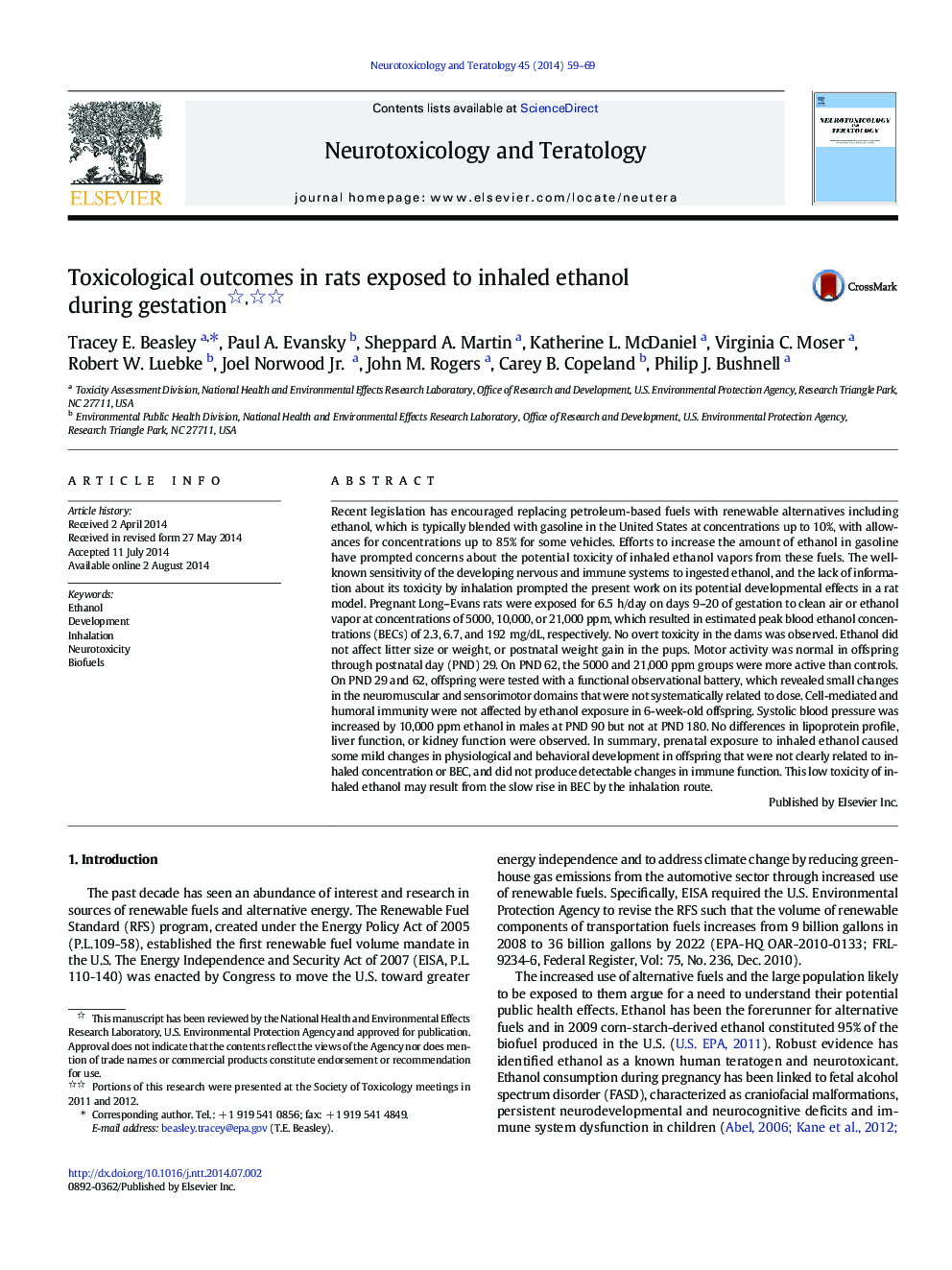| Article ID | Journal | Published Year | Pages | File Type |
|---|---|---|---|---|
| 2590926 | Neurotoxicology and Teratology | 2014 | 11 Pages |
•Pregnant rats were exposed to ethanol vapors yielding peak BEC of ~ 200 mg/dL.•No acute effects of ethanol were seen in the exposed dams.•Offspring exhibited no effects of ethanol on behavior, immunology, or physiology.•Lack of effects of inhaled ethanol may suggest a slow rise in BEC during exposures.
Recent legislation has encouraged replacing petroleum-based fuels with renewable alternatives including ethanol, which is typically blended with gasoline in the United States at concentrations up to 10%, with allowances for concentrations up to 85% for some vehicles. Efforts to increase the amount of ethanol in gasoline have prompted concerns about the potential toxicity of inhaled ethanol vapors from these fuels. The well-known sensitivity of the developing nervous and immune systems to ingested ethanol, and the lack of information about its toxicity by inhalation prompted the present work on its potential developmental effects in a rat model. Pregnant Long–Evans rats were exposed for 6.5 h/day on days 9–20 of gestation to clean air or ethanol vapor at concentrations of 5000, 10,000, or 21,000 ppm, which resulted in estimated peak blood ethanol concentrations (BECs) of 2.3, 6.7, and 192 mg/dL, respectively. No overt toxicity in the dams was observed. Ethanol did not affect litter size or weight, or postnatal weight gain in the pups. Motor activity was normal in offspring through postnatal day (PND) 29. On PND 62, the 5000 and 21,000 ppm groups were more active than controls. On PND 29 and 62, offspring were tested with a functional observational battery, which revealed small changes in the neuromuscular and sensorimotor domains that were not systematically related to dose. Cell-mediated and humoral immunity were not affected by ethanol exposure in 6-week-old offspring. Systolic blood pressure was increased by 10,000 ppm ethanol in males at PND 90 but not at PND 180. No differences in lipoprotein profile, liver function, or kidney function were observed. In summary, prenatal exposure to inhaled ethanol caused some mild changes in physiological and behavioral development in offspring that were not clearly related to inhaled concentration or BEC, and did not produce detectable changes in immune function. This low toxicity of inhaled ethanol may result from the slow rise in BEC by the inhalation route.
